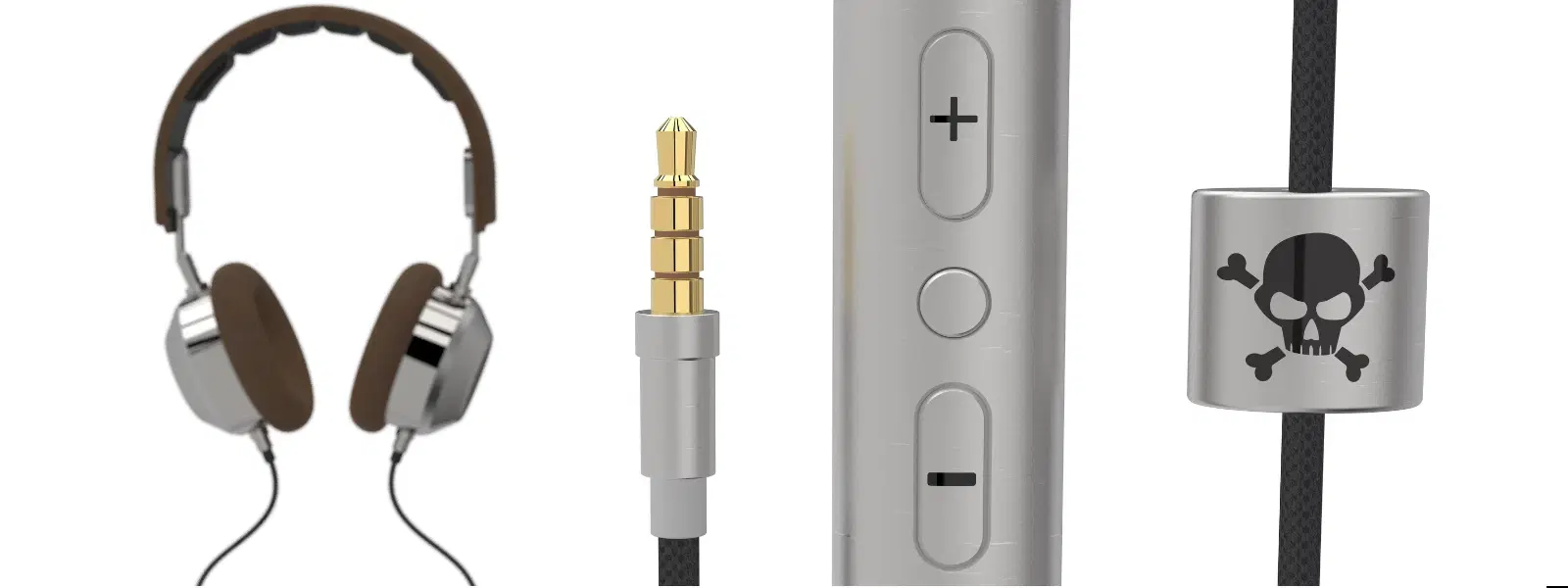
Consumer Electronics
•05 min read
(51)-bf9613a9-c203-4f21-b2db-eb526cee569f.png&w=3840&q=75)
Ever wondered why your earbuds fit into some devices but not others? Today, we’ll dive into what a headphone jack actually is, its types, uses, and functions. At Tata Neu, we aim to make your tech choices easier and more rewarding. By understanding the intricacies of headphone jacks, you can make informed decisions about your audio needs and take full advantage of Tata Neu’s offerings.
So, what is a headphone jack? Essentially, it’s an audio connector that allows you to plug in headphones or earphones into various devices. Common sizes include the 3.5mm audio jack, which is the most widely used, along with 2.5mm and 6.35mm jacks. Despite the rise of wireless audio solutions, the headphone jack remains relevant due to its simplicity and reliability. Its versatility allows it to be used in a range of devices, from smartphones and laptops to professional audio equipment.
The headphone jack has evolved significantly since its inception in the late 19th century. Initially used in telephone switchboards, it has now become a standard feature in most audio devices. Its design has also undergone changes to accommodate new technologies and user needs.
There are different types of headphone jacks that serve various purposes:
This is the most common type of headphone jack, found in smartphones, laptops, and many other gadgets. It’s known for its versatility and ease of use. The 3.5mm jack is often referred to as a mini-jack and is universally compatible with most audio devices, making it a popular choice for consumers and manufacturers alike.
The 2.5mm jack is smaller and often used in specific applications like certain types of communication devices. The 6.35mm jack, also known as the 1/4-inch jack, is typically used in professional audio equipment. The larger size of the 6.35mm jack allows for a more robust connection, which is essential for high-quality audio output in professional settings.
Modern alternatives like USB-C and Lightning ports are becoming popular, especially in newer smartphone models. These types offer digital audio output and additional functionalities. USB-C and Lightning ports provide better audio quality and support features like noise cancellation and high-resolution audio, which are not possible with traditional analog jacks.
When comparing headphone jacks vs USB, each has its pros and cons. While traditional headphone jacks offer widespread compatibility, USB and Lightning ports provide better audio quality and more features. The choice between the two depends on your specific needs and the devices you use.
-811ecd88-361a-428a-bc3e-043ff8e234e7.png&w=3840&q=75)
Headphone jacks play a crucial role in audio connectivity by connecting your devices to headphones or speakers. They are compatible with a range of gadgets, including smartphones, laptops, and tablets. This versatility makes them an essential component of any audio setup.
In some situations, a headphone jack adapter can be incredibly useful. For instance, if your device has a USB-C port but your headphones have a 3.5mm plug, an adapter can bridge the gap. This flexibility allows you to use your favorite headphones with different devices without compromising on audio quality.
Beyond audio, headphone jacks can also integrate microphones and remote control features, allowing you to take calls and control playback without touching your device. This multifunctionality enhances the user experience by providing convenient control over various functions.
Did You Know? Headphone jacks have been around since the late 19th century, evolving from telephone switchboards to the versatile connectors we use today.
Like any other component, headphone jacks can encounter issues such as loose connections or static noise. If you face such problems, it might be time for a headphone jack replacement. While minor issues can be resolved with DIY fixes, more significant problems might require professional help. Tata Neu’s after-sales support, including ZipCare services, ensures your devices are well taken care of. With ZipCare, you can protect your devices against manufacturing defects and accidental damage, ensuring that your audio experience remains uninterrupted.
It’s used to connect headphones or earphones to various devices for audio output.
No, common sizes include 2.5mm, 3.5mm, and 6.35mm.
-f8fe8dd9-cfbd-45ca-9f27-d52941751609.png&w=3840&q=75)
Consider the type of ports on your device and the plug on your headphones.
While minor issues can be DIY fixed, significant problems should be handled by professionals.
Many smartphones, laptops, and tablets still feature the 3.5mm audio jack.
Some manufacturers prefer USB-C or Lightning ports for their compact design and superior audio quality.
Yes, as long as your device supports both types of connections. You may need an adapter for wired headphones if your device lacks a headphone jack.
To recap, understanding the types, uses, and importance of headphone jacks can help you make informed tech purchases. Explore Tata Neu for a wide range of tech products and accessories. Enjoy exclusive benefits like NeuCoins, express delivery, and expert guidance.
Actionable Takeaways:
Understand the different types of headphone jacks to make informed purchases.
Consider the benefits of using headphone jack adapters for compatibility issues.
Rely on Tata Neu’s reliable after-sales support for any headphone jack problems.
With Tata Neu, you can also enjoy additional benefits such as earning NeuCoins with every purchase, access to the latest tech gadgets from Croma, and expert guidance to help you make the right choices. Shop online or in-store and experience the best of both worlds with Tata Neu.